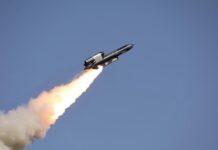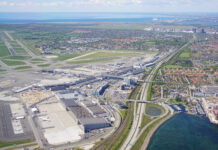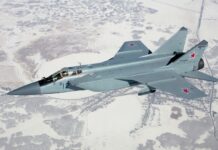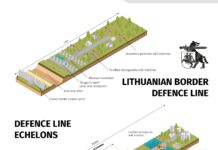Whether Russia in the Caucasus, Israel in Gaza and southern Lebanon, or the United States and its allies in Iraq, many sophisticated armies have experienced urban warfare over the past two decades. Urban assault has many unique challenges.
Urban terrain generally favours the defender, who can prepare defences, utilise deception, install traps and explosive charges, and monitor the attacker from a myriad of hard-to-detect locations. Even boulevards are narrow compared to open terrain, constricting mobility and channelling attackers into urban canyons overwatched by enemy snipers, ATGMs (Anti-Tank Guided Missiles) and RPGs (Rocket-Propelled Grenades). The presence of civilians as human shields inhibits offensive operations (at least by those armed forces which place a premium on international law and human rights); lack of intelligence regarding opposition force dispositions is another serious threat multiplier.

Optimising offensive urban operations therefore requires careful preparation, preferably adjusting the force and equipment mix to the specific conditions being faced. Urban assault operations require a combined arms approach including aerial reconnaissance and ground support, engineering support, signals intelligence, armoured forces, and a strong infantry component for house-to-house combat and clearing operations.
Optimising Heavy Armoured Vehicles for Urban Warfare
As with warfare in conventional terrain, a balance must be struck between mobility, protection and firepower. Large, heavy vehicles such as main battle tanks (MBT) can use their long-range large calibre guns to destroy enemy strongholds and their secondary weapons to suppress enemy fire while infantry advances. However, they cannot access all points of the urban battlefield. And while they have the maximum level of protection, MBTs move slowly through the cluttered urban environment. A slow or stalled MBT becomes an inviting target for anti-tank weapons or large roadside bombs. Tanks must work in concert with armoured personnel transports, a category which includes infantry fighting vehicles (IFV) mounting support weaponry, and lighter armoured vehicles. While IFVs face many of the same urban obstacles as MBTs, moderate-to-lightly armoured wheeled vehicles utilised as assault carriers have the advantage of speed, manoeuvrability, and the capability to enter narrower thoroughfares to approach targets or pursue adversaries.
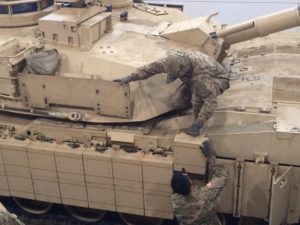
The Israeli Defence Force (IDF) has focused on improving its urban combat capabilities – with a special focus on force protection – since losing 67 troops (at least 13 of them killed while riding in armoured vehicles) during the 2014 incursion into Gaza. The IDF is currently upgrading its NAMER IFV specifically to meet the urban warfare challenge. The NAMER, introduced in 2008 and produced by Israeli Military Industries (IMI), is basically a MERKAVA MBT on which the 120mm gun turret has been replaced by a weapon station mounting machine guns. Removal of the turret allows the MERKAVA chassis to be reconfigured to carry a nine-person infantry squad in addition to the vehicle crew.
Beginning in 2017, the NAMER is receiving an unmanned remotely operated turret mounting a 30mm chaingun. This will permit the vehicle crew to provide more effective firepower for the dismounted squad. The Raphael TROPHY Active Protective System (APS) mounted on the turret will augment the already considerable armour protection of the MERKAVA chassis.

Israel took the step of introducing and then upgunning the NAMER specifically to enhance its urban operations capabilities. “An APC equipped with a turret and cannon gives it an advantage during urban warfare,” said Brig.-Gen. Baruch Matzliach, head of the Tank Program Administration, when the upgrade was introduced in 2017. “The shortened cannon makes it more manoeuvrable, and [gives it] the ability to provide firepower to infantry soldiers.”
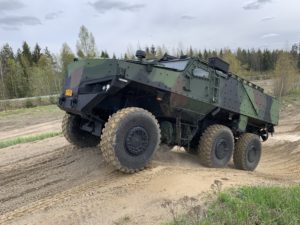
For the same reason, the IDF is also outfitting its new EITAN 8×8 Armoured Personnel Carrier (APC) with a 30mm cannon (range: 2,500 meters) and ATGMs, as well as the TROPHY APS. The weapons turret is remote controlled, eliminating the need for soldiers to expose themselves to enemy fire.
The United States army has been taking urban warfare requirements into consideration when developing upgrades to armoured combat vehicles. For the US and other NATO forces this is all the more relevant since any potential war in Europe is likely to include significant urban combat as well as field combat.
The ABRAMS M1A1 MBT is being outfitted with new reactive armour to provide added protection against ATGMs and RPGs. The ABRAMS Reactive Armour Tile was installed on US Army MBTs stationed in Europe in 2017. The tiles can be mounted at an angle, depending on the mission environment. For urban environments, where adversaries are expected to attack from second or third stories or rooftops, the tiles can be angled so that their blast would push out and upwards toward the threat. The US Army is also actively working to equip the M1 with the TROPHY APS, while seeking viable APS solutions for the services’ other armoured vehicles.
The ABRAM’s offensive capabilities are also being bolstered through introduction of the Advanced Multi-Purpose (AMP) round. The AMP, developed by Orbital ATK is replacing the four specialized 120mm shells fielded on the ABRAMS. It has a programmable fuse which allows the gunner to select the shell’s performance on target after the round is chambered. The parameters are entered via an ammunition data link developed by Northrop Grumman. Point Detonation mode and Airburst mode have the greatest relevance to urban warfare. The former can destroy vehicles or defilades on impact or breach walls to open access routes for friendly infantry. The round provides added capability to breach reinforced walls, with the ability to penetrate 20 centimetre thick walls of reinforced concrete. The fuse can be set to detonate on impact or with a delay, in order to maximise effects inside the targeted building. The Airburst mode can detonate the round above but near entrenched enemy fighters including sniper, artillery and missile personnel in defilade or on rooftops. It can also be aimed to enter an open window and kill enemy fighters inside a specific room.
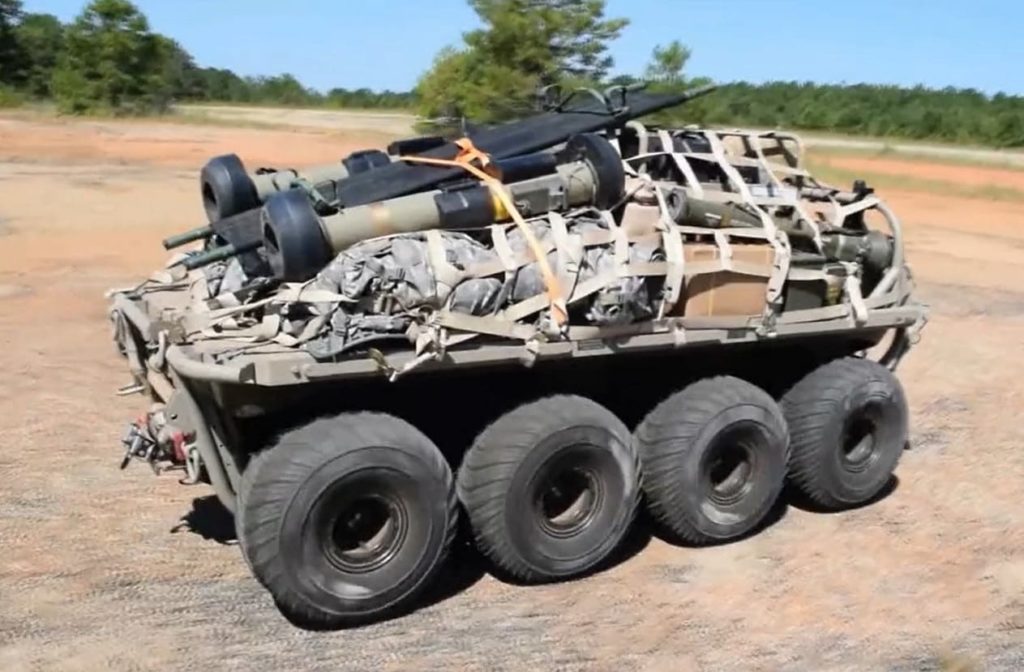
Light Armoured Vehicles for Urban Assault
Heavy armoured vehicles need to be supported by lighter, agile protected vehicles capable of getting infantry within striking distance of the enemy. Wheeled armoured vehicles, while field capable, are usually well suited for urban operations. Three new developments in this area are Protolab’s 6×6 Protected Multi-Purpose Vehicle (PMPV), Rheinmetall’s 4×4 Armoured Multi-Purpose Vehicle (AMPV) and Rheinmetall’s SURVIVOR R Multirole Protected Vehicle.
The Finnish armed forces are currently testing the PMPV prototypes. “We designed the Protolab PMPV 6×6 to meet the requirements of today’s soldier and today’s asymmetric battlefield,” Juha Moisio, Protolab Oy Business Development Director said upon presentation of the prototypes. The PMPV is certified to satisfy NATO STANAG mine and ballistic protection level 2a/b (with possible upgrades to STANAG 4), and is capable of accepting an armoured external weapons mount. The 14-tonne vehicle carries a crew of two plus ten combat-equipped soldiers. At 2.55 metres width the PMPV is narrower than most armoured combat vehicles, enhancing mobility in urban settings.
Rheinmetall and co-developer Krauss-Maffei-Wegman presented the AMPV prototype to the German armed forces in 2009, and subsequently offered the vehicle to the Polish armed forces. At 2.24 metres width, 5.34 metres length and 2.14 metres height, the highly agile AMPV can access any place that an SUV can go. The turning circle is 15 metres. The vehicle can accept a choice of remote-controlled weapons stations mounting up to a 12.7mm machine gun or a 40mm grenade weapon, plus a day/night sensor system including a laser rangefinder and a sniper detection sensor. The weapon can be elevated up to 70 degrees, making it ideal for urban operations; depending on armament choice, effective range can be up to 2,000 metres.
The SURVIVOR R protected vehicle is also optimised for urban operations, and can be configured for either military or police requirements. The vehicle is a joint development of Rheinmetall and Achleitner. The vehicle is based on an MAN 4×4 truck chassis, with an armoured crew compartment and state-of-the-art vectronics by Rheinmetall. The gas-tight monocoque seats ten combat-ready soldiers including the driver. Additional armour and a rooftop weapon station are optional, as are searchlights, non-lethal effectors such as smoke systems, protective grids for windows, and a dozer blade. The 2,7-metre-high chassis is 2.5 metres wide (2.9 metres counting rear-view mirrors).
Infantry Force Multipliers – Sensors
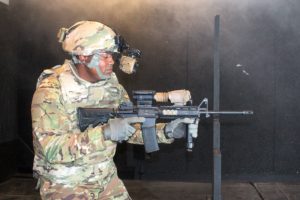
The US Army is introducing technology which allows soldiers to fire their weapons around corners without exposing themselves, a capability which is especially valuable in urban terrain. The system involves two separate, newly developed pieces of equipment: the Family of Weapon Sights – Individual (FWS-I) which is mounted on the individual assault rifle, sniper rifle or squad automatic weapon; and the helmet mounted Enhanced Night Vision Goggle-Binoculars (ENVGIII).
The binocular goggles can be utilised in standard daylight mode with image intensification, or in infrared mode. Unlike previous night vision devices, the new goggles require no ambient light, so they can be used in tunnels or windowless buildings. The infrared capacity also ensures detection of enemy forces through smoke or other vision-inhibitors. The maximum visual range with the device is 1,500 metres. A blue-force overlay is wirelessly transmitted from the soldier’s digital map, preventing friendly fire incidents. A toggle allows the soldier to wirelessly transmit the picture from the digital FSW-I to the goggle display. This capability allows the shooter to remain under cover and only extend the weapon around a corner or over a barricade; guided by the display of the FSW-I’s reticle on the goggle, the soldier can aim the weapon and engage the enemy from cover. The new system is currently undergoing operational testing at the 1st Infantry Division, which received 640 sets in September 2019.
Other sensors suitable for urban operations are being pursued. These include handheld radars which can penetrate walls and other barriers to determine whether there is a human presence or any other potential threat. Lumineye, a small technology firm located in Boise, Idaho, is already marketing such devices to civilian agencies such as police and fire departments. The US Army awarded a 250,000 Dollar development contract to Lumineye in November 2019, with the goal of adapting the firm’s tablet-sized LUX for military applications. The device sends out pulsed radar waves that can penetrate most solid materials. The LUX applies signal processing software to evaluate the returning radar signal and differentiate between humans and objects. The motion detection capacity is so sensitive that it can tell that a person hidden behind a wall is breathing. While it cannot differentiate between combatants and civilians, it does enable soldiers to prepare for resistance before entering or breaching a room or building. The device could also help locate hidden rooms, trapdoors, and other concealed spaces within a building. The effective range of the radar is 15 metres in the open; the range of detection through walls depends on the barrier’s density and composition.
Infantry Force Multipliers – Unmanned Ground Systems
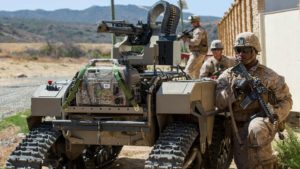
Finally, there is an increased focus on unmanned ground systems for urban operations. This includes small-to-medium sized armed robots, remote controlled support vehicles, and logistic robots.
Several nations, including Russia, the Ukraine and Israel, have been experimenting with remote controlled armed robots ranging in size from a golf cart to a bathroom scale. These smaller unmanned systems are most relevant for urban operations. The US Marine Corps has been pursuing several models, including the Modular Advanced Armed Robotic System (MAARS) developed by Qinetic. The tracked robot can be armed with am M240 machine gun or a 40mm grenade weapon with lethal or non-lethal munitions. Capable of functioning up to one kilometre from the operator, the robot can be used for armed reconnaissance outdoors or within a building (the tracks enable the climbing of stairs).
Other robotic projects include four-legged machines the size of a large dog. Sometimes referred to as “mules”, these systems are under consideration as reconnaissance assets or as “beasts of burden” to carry a portion of a squad’s gear while patrolling or advancing, or for resupply of units in advanced positions. In 2019, the US Army awarded General Dynamics Land Systems a contract for the first tactical logistics robot. The tracked Small Multipurpose Equipment Transport (SMET) will carry up to 450 kg worth of supplies, equipment and weapons. The first production units are expected to be delivered around 2021.
Larger unmanned systems are also already deployed. In 2018, Israeli Aerospace Industries (IAI) delivered the first D9T PANDA remote controlled armoured bulldozers to the IDF. The PANDA is a further development of the manned CATERPILLAR D9R and the unmanned D9N already in service. Armoured bulldozers have become indispensable for urban operations in Gaza, where the IDF has deployed them to collapse tunnels, destroy defilades and buildings, clear suspected explosive charges or overrun manned firing positions. In addition to slat armour against RPGs, the D9 family is also equipped with the TROPHY APS.
Sidney E. Dean is President of Transatlantic Euro-American Multimedia LLC. and a regular contributor to ESD.






